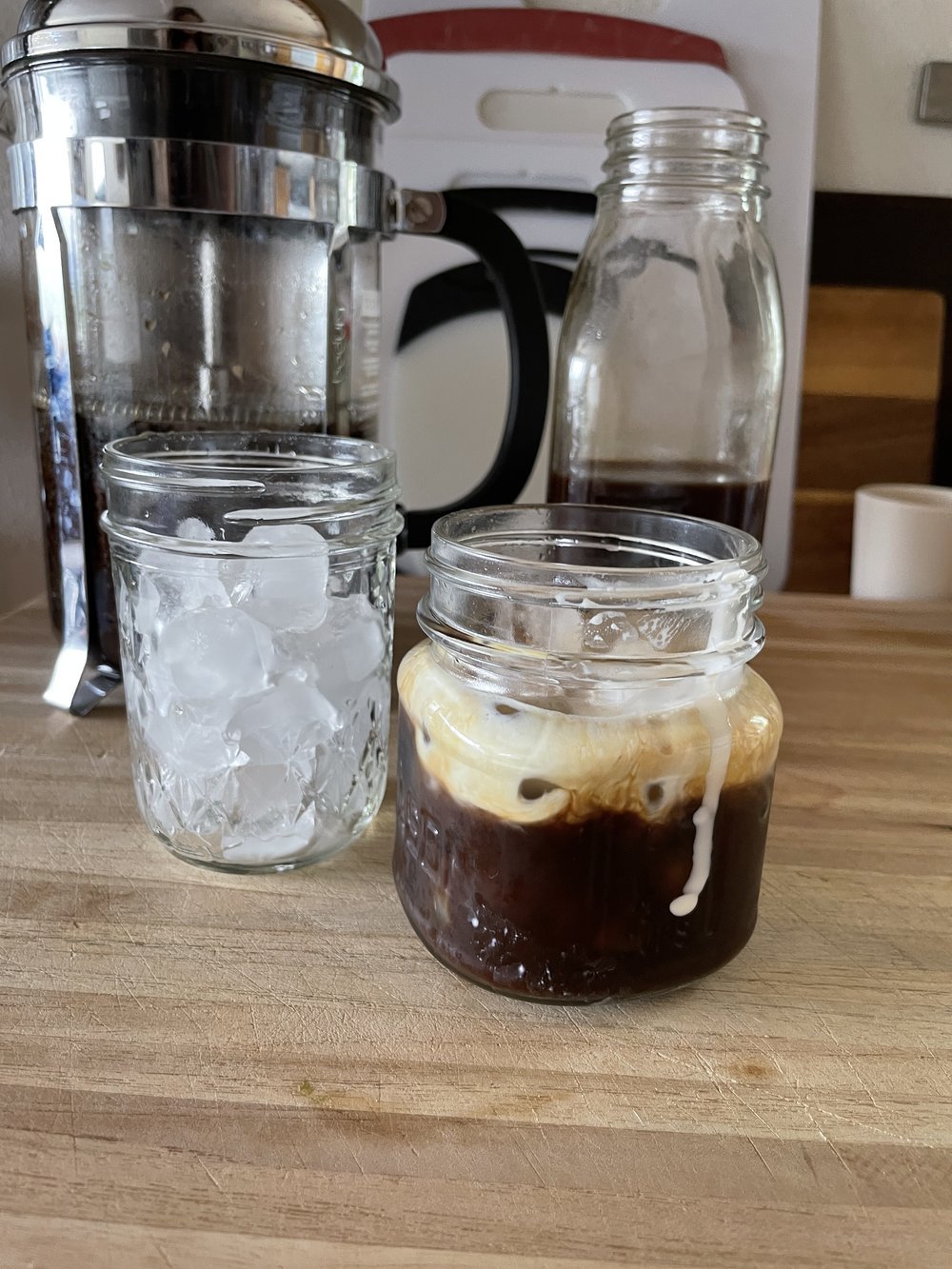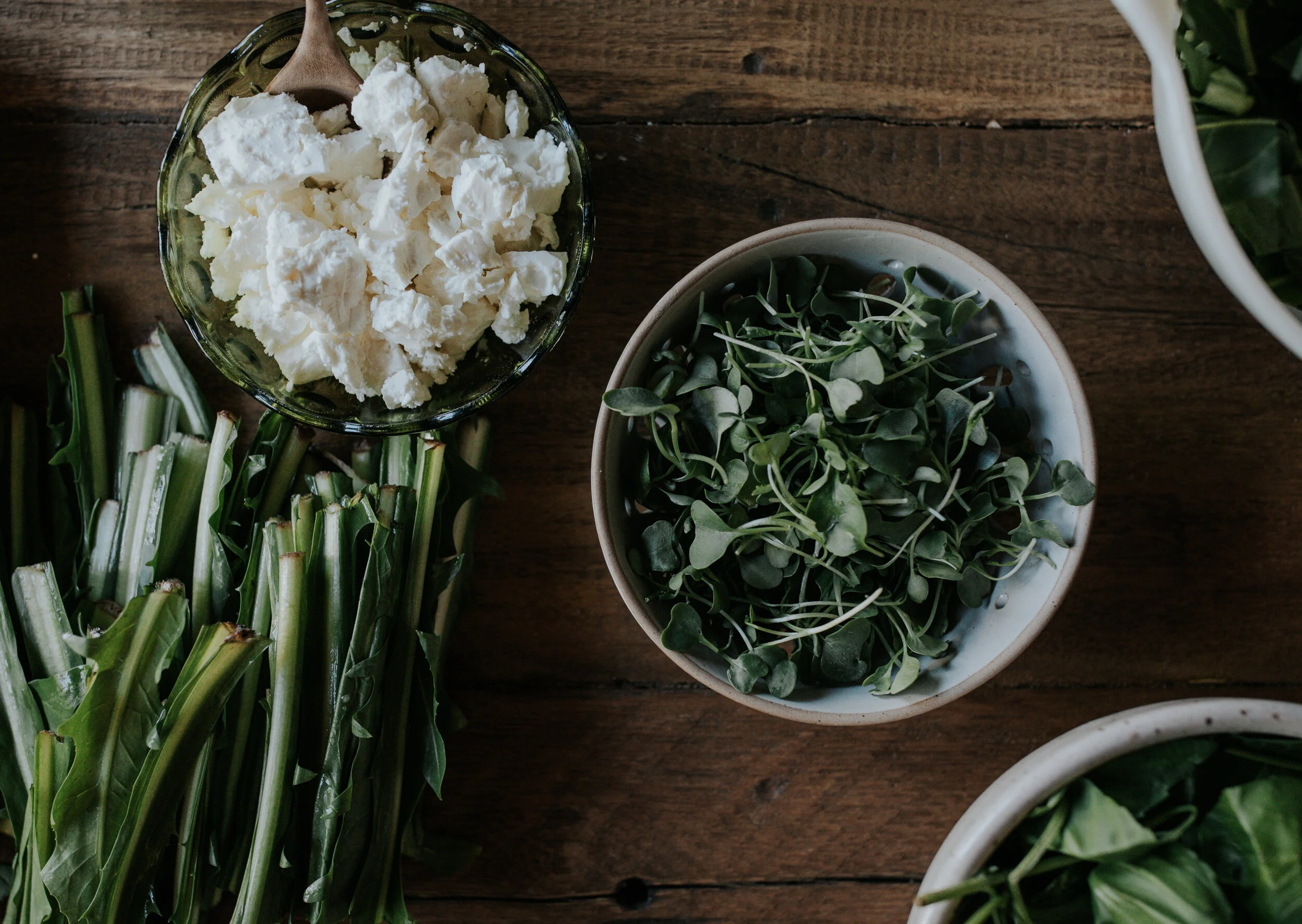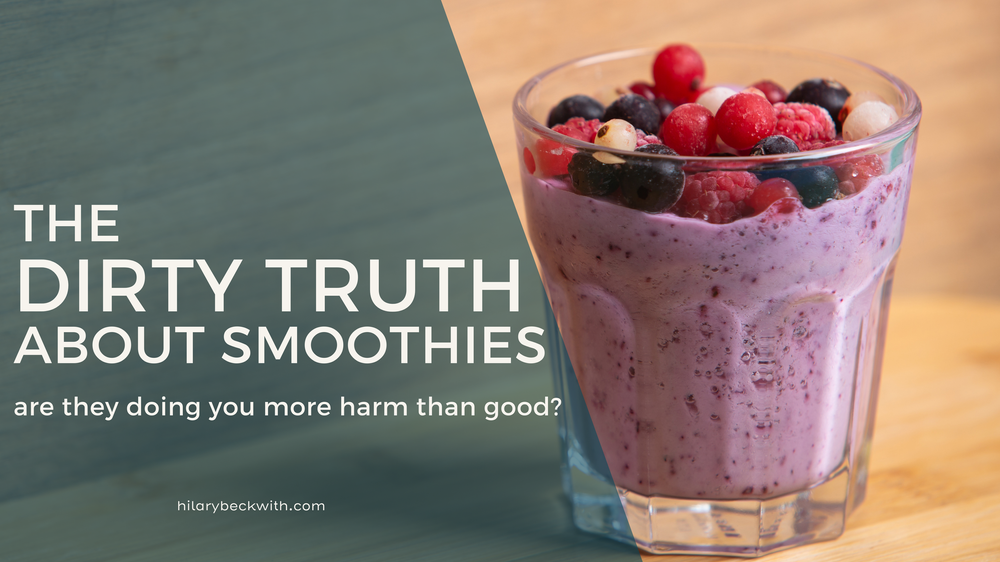Easy Nut Milk Recipe - Cashew Milk Recipe from a Nutritionist
Nut milks and other plant-based milks, like oat milk are all the rage right now. Eating vegan food diets in general have been hyped up by misinformation, and as a holistic nutritionist, I think we are missing a lot of important nutrients, and destroying our planet more, by consuming poor-quality animal protein substitutes.
But I also know animal proteins may not be the best option for some individuals, due to religious beliefs, inner conflict with killing of animals.
Making nut milk at home
Nut milks and other plant-based milks, like oat milk are all the rage right now. Eating vegan food diets in general have been hyped up by misinformation, and as a holistic nutritionist, I think we are missing a lot of important nutrients, and destroying our planet more, by consuming poor-quality animal protein substitutes.
But I also know animal proteins may not be the best option for some individuals, due to religious beliefs, inner conflict with killing of animals.
In these cases, it’s important to remember that many store-bought vegan milks are full of toxic seed oils, harmful emulsifiers, and starches, that poorly impact the health of your body and the environment. Yet they are marketed as being a healthier alternative to animal milk.
READ MORE ABOUT MY THOUGHTS ON CURRENT HEALTH TRENDS.
That’s why I want to share my favorite nut milk recipe for Cashew Milk! This recipe is easy, creamy, slightly sweet (cashews are sweet!), and best of all, contains no harmful additives.
This recipe was inspired by itdoesnttastelikechicken.com.
easy cashew milk recipe
INGREDIENTS
1 cup raw cashews
4 cups filtered water, room temperature, plus 1 cup for blending
1 teaspoon pure vanilla extract (optional)
pinch of sea salt
2 Tablespoons agave or high-quality maple syrup (optional - I think it’s perfectly sweet without)
OPTIONAL FLAVOR IDEAS: pinch of cayenne pepper, ground cinnamon, or fresh ground nutmeg.
INSTRUCTIONS
Soak the cashews: Place the raw cashews into a bowl or jar with the 4 cups filtered water. Leave at room temperature for 3-8 hours (or overnight).
Strain and blend: Strain the soaked cashews and add them to your blender with the remaining 1 cup filtered water, vanilla, sea salt, and sweeteners, if using. Add any other spices/flavorings you want to try, and blend until smooth!
Shake or stir before serving. Foams well for a latte, or great for drinking by itself!
did you make this recipe?
Tell me how it went in the comments below!
NUTRITION SERVICES
MORE RESOURCES
Make Cold Brew Coffee At Home (you will never go back!)
As a nutritionist, I can tell you that your craving for afternoon coffee has everything to do with adrenal dysfunction or blood sugar…
But I’m not going to get into that today, because the reality is, on a warm summer day in Seattle, there is nothing better than sipping a super smooth, rich, icy cup of cold brew coffee.
Cold brew coffee is stupid easy to make in any case, but this method blows all others out of the water.
Cold-Brew Coffee Recipe
I’m going to get straight to the point here.
I. Love. Coffee.
As a nutritionist, I can tell you that your craving for afternoon coffee has everything to do with adrenal dysfunction or blood sugar…
But I’m not going to get into that today, because the reality is, on a warm summer day in Seattle, there is nothing better than sipping a super smooth, rich, icy cup of cold brew coffee.
Cold brew coffee is stupid easy to make in any case, but this method blows all others out of the water.
Concerned about caffeine? Here’s a great resource for you.
Let’s get to it.
cold Brew coffee concentrate
WHAT YOU NEED
9oz. coffee beans (choose your favorite roast), ground course
3.5 cups (28oz.) filtered water, room temperature
2-quart French press, or 2-quart measuring cup
Cheese cloth, old (clean) T-shirt, or nut-milk bag (skip this if using a French press)
Himalayan or Celtic Sea salt (optional)
INSTRUCTIONS
In the French press or measuring cup, place the ground coffee beans. Gently add the filtered water, ensuring all grounds are immersed, let sit for 10 minutes.
Gently stir the grounds to re-wet them. Cover and let sit at room temperature for 24 hours.
If using a French press, press and pour into a glass container with a tight-fitting lid. If not using a French press, filter through cheese cloth, T-shirt, or nut milk bag, and store in a glass container with a tight-fitting lid.
To serve, dilute 1:1, water to concentrate (or pour over ice). Add cream or sugar, if that's how you dig it, and enjoy pure bliss!
This concentrate can be stored in the refrigerator for up to 7 days.
did you make this recipe?
Share your experience in the comments!
NUTRITION SERVICES
MORE RESOURCES
Easy Weeknight Recipe: Mediterranean Superfood Bowl
This recipe is my favorite in terms of versatility and nutrient density. It’s the perfect healthy recipe for easy summer evenings.
The ingredients can be switched up easily without risking flavor components and can easily adapt to your nutritional needs. The romesco is plant-based on its own, so there’s no need to adapt if you eat vegan.
Easy Healthy Vegan Recipe
This recipe is my favorite in terms of versatility and nutrient density. It’s the perfect healthy recipe for easy summer evenings.
The ingredients can be switched up easily without risking flavor components and can easily adapt to your nutritional needs. The romesco is plant-based on its own, so there’s no need to adapt if you eat vegan.
While the fresh vegetable component does not make this a freezer-friendly meal, the sauce does freeze well. In fact, we eat these often in my home, so I typically will double or triple the recipe for romesco and freeze it in individual portions.
One batch of sauce, greens, & grain, makes 4 bowls. Top to your tummy’s content to make the tastiest healthy recipe!
Want to know how to choose the best quality ingredients for this recipe? This is the best resource for understanding food labels.
Let’s get to the recipe!
Mediterranean superfood bowls - plant-based and vegan-friendly
FOR THE SAUCE:
16oz JAR ROASTED RED PEPPERS (OR ROAST YOUR OWN!)
1 CLOVE GARLIC, PEELED
½ TSP SEA SALT (MORE TO TASTE)
JUICE OF 1 LEMON (ABOUT ¼ CUP)
½ CUP EXTRA VIRGIN, COLD-PRESSED OLIVE OIL
½ CUP WHOLE, RAW ALMONDS
FOR THE BOWLS:
2 CUPS LOOSELY PACKED, CHOPPED (PICK ONE):
DANDELION
ARUGULA
SPINACH
BABY KALE
½ CUP UNCOOKED GRAIN (PICK ONE) (omit, if you’re grain-free):
QUINOA
WILD RICE
FARRO
PICK 1-2 FATS/PROTEINS:
OLIVES (KALAMATA, GREEN, BLACK)
RAW PUMPKIN SEEDS, LIGHTLY TOASTED
CRUMBLED FETA CHEESE
QUALITY HUMMUS (OR CHICKPEAS!)
AVOCADO
PICK 2-3 (OR 4 OR 5) HERBS/VEG/OTHER TOPPINGS:
HEIRLOOM DICED TOMATOES
DICED CUCUMBER
MICROGREENS
SLICED RADISHES
ARTICHOKE HEARTS
PEPPERONCINI
CHOPPED CAULIFLOWER
THINLY SLICED RED ONION
SLICED GREEN ONIONS
FRESH CILANTRO/ITALIAN PARSLEY/BASIL, CHOPPED
LEMON JUICE
EXTRA VIRGIN OLIVE OIL
SALT & PEPPER
SLICED JALAPEÑOS
Cook the grain you selected according to package directions (unless omitting). Allow to cool to room temperature.
Place all sauce ingredients in a blender or food processor fitted with a chopping blade. Blend/process on high speed until desired consistency (I prefer it a tad on the “chunky” side).
Prepare the greens and other toppings. There is no hard & fast rule to this – go with your favorite textures & flavors! I prefer my ingredients to be more finely chopped, giving it a “chopped salad” mouth feel, but you may enjoy a chunkier texture.
Divide the greens, grains, sauce, then your toppings, among 4 separate bowls. Enjoy right away, or store in airtight glass containers. Will last 4-5 days in the refrigerator, depending on ingredient freshness.
did you make this recipe?
How’d it go? Share your thoughts in the comments!
NUTRITION SERVICES
MORE RESOURCES
Are Smoothies Good For You?
While all those things may be true of smoothies, if you've been following me for any amount of time, you know that the idea of salads & smoothies as a way to eat healthy (or even the idea of having a "beach body") is pure misinformation.
HOWEVER, I am fully aware that it is really easy to get sucked into anything we hear or read that will make us healthier!
I mean, we've been conditioned to believe that "nothing tastes as good as skinny feels," right?
Are smoothies healthy?
Summer tiiime, and the livin's easy…
The sun is finally out to play for a while, and it’s also a time for fresh berries, delicious greens, and the need for a cool treat.
When we think healthy food, our brains often go to foods like salads or smoothies.
Loaded with fruits and veg, these foods are the epitome of modern “health foods”.
But it's tricky to fit salads into our busy schedules, so we go for smoothies instead. We opt for smoothies because they are:
Quick.
Nutritious.
Healthy.
A Sweet Treat.
And Easy to Grab and Go.
While all those things may be true of smoothies, if you've been following me for any amount of time, you know that the idea of salads & smoothies as a way to eat healthy is pure misinformation.
HOWEVER, I am fully aware that it is really easy to get sucked into anything we hear or read that will make us healthier!
I mean, we've been conditioned to believe that "nothing tastes as good as skinny feels," right?
Well, my friend - I am here to rock your world.
I am not suggesting smoothies in and of themselves are unhealthy for you.
Not at all.
But it’s important to look at all the information.
I became a holistic nutrition expert because I want to offer factual information that will help you change the way you view health and advocate for your body. And to do that, you need to have a better understanding of how your body works.
I love to debunk misinformation I hear and offer facts to help you make more educated choices.
So, I'm about to say something you may not have heard before...
SMOOTHIES MAY BE DOING MORE HARM TO YOUR HEALTH, THAN GOOD.
Yup!
It's true, there are health benefits to smoothies, mostly in the realm of concentrated nutrients.
But what if I told you your body can't absorb and use those nutrients very effectively? Would it actually be more nutritional to eat a cheeseburger?
Let's talk about it.
the dirty truth about smoothies
What are the primary reasons you drink smoothies?
high concentration of antioxidants & nutrients
sweet treat
filling without too many calories
convenient
fast
easy to carry
We drink smoothies because we are busy, and we want to eat healthy, and we want a choice that will be easy to consume while we juggle our busy life.
Are we on the same page so far?
Cool.
Now, let's review a little Digestion 101.
In order to digest food, our body must be using its parasympathetic nervous system (rest and digest), meaning, you must be relaxed & not multitasking while eating. Our brains recognize rushing around (even if you’re not feeling "stressed") as a stressor, and respond with the sympathetic nervous system (known as fight or flight), which actually inhibits digestion.
Proper chewing begins the digestive process by releasing enzymes in your saliva to begin the breakdown of food. The type of food you eat will tell your brain which enzymes are needed.
If switched into rest and digest state, once food enters the stomach, hydrochloric acid (AKA stomach acid, or HCl) is released to disinfect the food, and triggers other enzymes to be released or activated.
The now acidic food is neutralized as it begins to enter into your small intestines, which is where nutrients are transported through the wall of the intestines, and into your bloodstream, where they are carried to the liver to be delegated. If digestion is not working properly, this is where foods that are not properly broken down will enter the bloodstream, causing damage to the gut lining, and food sensitivities.
The large intestine is where the majority of water and fats are absorbed into the bloodstream. The fiber that remains (fiber is undigestible by human enzymes but is needed to feed our "good" bacteria) will feed our microbiome, and anything left will be excreted as waste.
why smoothies should not be considered a health food
So, now that you can see the big picture, let's break it down some more.
We know that eating while on-the-go (sympathetic nervous system), inhibits our digestive processes altogether.
…and…
Not properly chewing inhibits your body’s ability to produce adequate enzymes & HCl.
…therefore…
Drinking smoothies while on-the-go (as we typically do) ensures we are not getting the nutrients we intend, and is actually causing damage to our gut health.
So, it's fair to ask the question, are you really improving your health by drinking smoothies?
I'm not saying smoothies are bad for you... Smoothies are not the villain.
But the dirty truth is, if you are not sipping that smoothie while seated at a table with friends or family, or on a park bench, and not scrolling through your phone, AND if you're not "chewing" your smoothie - your smoothies are doing far more harm than good.
So... How do we get past this? Do I have to STOP drinking smoothies in order to eat healthy?
NOT AT ALL.
Smoothies, when properly made and consumed, are a phenomenal source of fiber, antioxidants, minerals, & other nutrients.
how to ensure your smoothies are doing more good than harm:
think small - if you wouldn't eat a bundle of spinach and a pint of blueberries in one sitting, don't put that in your smoothie.
change it up - our body needs a variety of nutrients, many of which are called "cofactors," meaning, it is needed in order to make a system or other nutrient function properly. Change up what you put in your smoothie - choose seasonal foods, and try to rotate them throughout the week.
make it green! - it is easy with smoothies to fill it up with more sugary fruits, like berries and bananas. Opt for more greens than fruits in your smoothies, and don't be shy with the fats and proteins (nuts, seeds, and whole milk plain yogurt are great for this!). The abundance of fiber, fat, and protein will help your blood sugar to stay steady (that "hangry" feeling you get a couple of hours after a smoothie, will DISAPPEAR).
BONUS TIP FOR MAXIMIZING NUTRITION: Change it up! Tempted to always grab that bag of kale or spinach for your smoothies? A variety of foods will improve the variety of nutrients you get from your smoothies, and will prevent food sensitivities from developing.
sit down to drink it (driving does not count!) - as with any meal, it is crucial to switch our body into "rest & digest" mode. Before you take your first sip, sit down at a table, on a park bench, or on your stoop, turn off your computer/phone/TV, and take 5 long, deep breaths.
"chew" your smoothie - Take smaller sips, and allow the smoothie to stay in your mouth for a few seconds. You will notice the volume will increase in your mouth - this is your salivary digestive enzymes being released! Give them space to do their job!
**For those who don't like the feeling of leaving smoothie in their mouth for so long, I recommend adding some seeds or cacao nibs in the last few seconds of blending of the smoothie, chopping them up just enough to get through the straw. This will give you something to chew on with every sip.
my favorite smoothie recipe
Here is one of my favorite go-to smoothie recipes:
1/4 granny smith apple (core and peel intact)
fingertip-sized cut of ginger, peeled
squeeze of lemon juice
handful of dark greens (dandelion, kale, arugula)
handful of wild blueberries
just enough liquid to help it blend (I like to use cow's milk or cashew milk)
raw pumpkin seeds - blend thoroughly to add creaminess to your smoothie, then add a few more in the last few seconds to give you something to chew on)
When I want to add more "umph" I toss in a dollop of whole milk plain yogurt, a hefty spoon of nut butter, or a scoop of quality collagen peptides.
Smoothie blending tips and tricks
Add your chunky bits and liquids first, then greens on top. These bits are easier for most blenders to "grab," then the momentum will allow the greens to blend in nicely.
Start on a lower speed to chop first. Once you have the texture of a nice pico de gallo, increase to a higher speed to smooth it out. This prevents the dreaded **blade is spinning, but food is not catching** scenario (there's gotta be a name for that, right?)
What are the foods you LOVE to put in your smoothies?
Share your smoothie loves in the comments!
NUTRITION SERVICES
MORE RESOURCES
Homemade Trail Mix Recipe Without All The Processed Ingredients
But I’m here to tell you two things about your Trail Mix…
the ingredients in the store-bought Trail Mix, are toxic, and …
I would bet good money that there are at least two ingredients in your store-bought mix that you don’t like. (amiright?)
Easy Healthy Recipe for Summer Time
Maybe it sounds really simple to you, a DIY Trail Mix.
What’s the big deal? Throw in some nuts, raisins, M&Ms - VOILA!
Or, buy it off the shelf! Trail Mix is a health food, right?
But I’m here to tell you two things about your Trail Mix…
the ingredients in the store-bought Trail Mix, are toxic, and …
I would bet good money that there are at least two ingredients in your store-bought mix that you don’t like. (amiright?)
What a waste!!
The weather is warming up, and we are getting into more enjoyable hiking & camping weather, here in the northwest.
I effing LOVE this time of year.
And what better staple to have on hand than your tried-and-true Trail Mix. It’s satisfying, lightweight, high fat, high protein, and checks all the flavor and texture boxes. Plus, it has the ability to be PACKED with nutrients.
All of these factors make Trail mix the ultimate “health food” for hiking, right?
But can we really call it a “healthy” choice if it is laden with toxic oils, sweeteners (yes, sweeteners), and they’ve stripped it of nutrients?
Making your own Trail Mix is easy. The struggle comes with choosing quality ingredients.
Most folks (myself included, for a good portion of my life) have not taken the time to evaluate the quality, and operate under the common misnomer that “nuts and fruits can’t be bad for you.”
THE HARD TRUTH IS, THEY CAN BE BAD FOR YOU.
So I’m going to help guide you through it.
By the end of this article, you will have a Trail Mix that is loaded with digestible nutrients, free of toxins, and the best portable snack choice to keep around.
The two main ingredients in a fantastic Trail Mix?
Something SWEET, and something SALTY.
Easy enough…
The SWEET typically comes from dried fruit and chocolate, and there is no need to deprive yourself there.
The SALTY often comes from roasted nuts and seeds.
Let’s talk about the SWEET.
It’s commonly thought that dried fruit is a healthy snack. But what happens when conventional dried fruit is made?
It gets sweeter - When fruit is dried, the fruit’s sugar is concentrated by way of making the actual fibrous tissue smaller, keeping the sugar content the same. Say you typically consume a handful of blueberries in one sitting, and that handful consists of about 20 berries. Now, say you take a handful of dried blueberries, now counting to 60 berries… That is a LOT of sugar in one sitting.
It gets coated in oil - yep, food manufacturers use oil (or corn starch, or more sugar) to coat the fruit after it’s dried, to prevent it from sticking. Very often, the oil used is a canola or vegetable oil, known to be incredibly toxic.
It gets (even more) sweetened - This one just BAFFLES me. Very often, MORE SUGARS are added to the already super-sweet dried fruit. Our culture has been conditioned to think that dried fruit is “healthy” candy. Unless you can find dried fruit that is not coated with toxic oils and sugars, I assure you dried fruit is not a health food.
Next time you are in the market, look at the ingredients on a bag of dried fruit. Should be just fruit, right? It rarely is.
Your best option is to make your own. But most people are not going to do that (and that’s okay - it’s the world we live in!).
If the best option works for you, then go get it, girl! Most of us need to come back to our “Good, Better, Best” mindset that I teach in the Kitchen Detox Workshop.
For many of us, the Better option is more suitable. Look for dried fruits that use better quality oils, like avocado, or coconut. And look for “unsweetened” on the label (then make sure they actually are unsweetened).
I also recommend choosing fruits that naturally contain less sugar, like tart cherries and cranberries.
Another option is to choose freeze-dried fruits, which are much more widely available than they used to be. They often don’t contain sweeteners or oils, but their texture can be ruined if any moisture gets in your Mix, so, use with caution.
Ooooh, and the SALTY?
Similar to dried fruits, it’s widely known that nuts & seeds are a staple of a healthful eating habit. Full of Omega 3s, fiber, & protein… They’re satiating, crunchy, and have a variety of flavors.
But did you know that, similar to dried fruit, many store bought, roasted nuts, are laden with the same types of toxic oils used to keep dried fruit from sticking: cottonseed oil, canola oil, vegetable oil…
A common method of roasting nuts is called oil roasting, wherein the nuts are soaked in a sodium chloride solution to remove the skins, then submerged in very hot (increasing the toxicity) oil. They’re basically deep fried.
As the nuts are packaged and stored, the oils continue to increase in rancidity and toxins.
SO, it’s pretty safe to say it’s a good idea to stay away from commercially roasted nuts. Dry roasted nuts are slightly less toxic.
Raw nuts have their own downfalls, too. They are much more rich in antioxidants, vitamin E, omega 3 and omega 6 fatty acids, fiber, minerals… raw nuts are a super food!
But they can be difficult to digest for some individuals, especially when we don’t chew them adequately. They contain something called phytic acid, which binds to the minerals in them, making those nutrients harder for humans to digest.
So what are our choices?
I do sometimes roast my own raw nuts, if I am looking for that lighter crunch factor. It’s fun to mess around with seasonings and make them my own.
But to do that properly can take some time - it’s not difficult, but oven roasting takes a few hours. Not everybody likes to take that time.
The better option is to purchase nuts that are sprouted.
Sprouting the nuts (although not all nuts/seeds can be sprouted) unbinds the phytic acid from important minerals, and allows them to be more easily digested by our human bodies.
👉👉READ MORE ABOUT THE BENEFITS OF SPROUTED FOODS
Sprouted nuts & seeds can be store-bought, or easily made at home from raw nuts & seeds. (this is a terrific guide to sprouting)
Now that we’ve got the ‘why’ sorted out, let’s dig into what you came here for!
MAKING THE ULTIMATE TRAIL MIX!
The ultimate Trail Mix, like everything else in my world of nutrition, is going to be up to YOU!
That’s the greatest part!
No more picking out the peanuts and raisins (my two least favorite components of a traditional mix). I also don’t like seeds in my trail mix because they’re more difficult to eat on the run when they are mixed with bigger components, like cashews or pecans. I prefer seeds for topping on salads, bowls, or smoothies.
Point is, YOU are driving the Trail Mix bus this time, my friend!
I say, take what you like, and RUN with it!
So what are the components of a GOOD Trail Mix?
The ratio of salty:sweet is the most important.
My personal preference is about a 4:1 mix of nuts/seeds:fruit.
For me, it’s more about the low-sweetness factor (I don’t prefer it).
For you, that might look more like a 3:1 or 2:1, or maybe you prefer an all nuts/seed mix with no sweet. That’s okay, too!
The first thing you need to figure out is how much Trail Mix to make to suit your needs. In my family, we eat about 3-6 servings a week. Since I am a huge advocate for batch cooking, I typically make a 7-8 cup batch, which lasts us 7-8 weeks. I store it in an airtight container in a dark, cool cabinet.
By that logic (I’m no math major), you could say to use 1 cup of a nut/seed/fruit ratio for every 3 servings you need. Play around with it, and find what works well for your family!
Once you figure that out, gather your ingredients in the ratio that you prefer, and let’s go!
easy healthy trail mix recipe
INGREDIENTS
7 cups organic, raw, sprouted nuts (I like a mix of macadamia, cashew, pecans, walnuts, and a smaller bit of almonds)
1 cup dried, sour cherries
flaked sea salt, to taste
INSTRUCTIONS
In a large mixing bowl, add the cherries. Sprinkle with flaked sea salt, and mix. Since this is primarily where my sweet:salty ratio is coming from (raw nuts are not salted), you want to make sure biting into one of those salty cherries tastes just right!
Add the nuts!
Mix together until well incorporated (the large bowl helps prevent spills)
Pour into airtight container and store in a dark, cool place.
**If opting to flavor your nuts or sprout your own, you will need to make sure they are completely dehydrated prior to mixing, to ensure mold does not contaminate your mix.
WANT TO KNOW HOW TO CHOOSE THE BEST QUALITY NUTS AND FRUITS FOR YOUR TRAIL MIX? CLICK HERE TO PREVIEW MY LABEL READING COURSE, CUT THE CRAP.
was this helpful?
What are your favorite Trail Mix components (or what components do you just dread in a store-bought mix)?
Share them with me and other readers in the comments below!
NUTRITION SERVICES
MORE RESOURCES


























